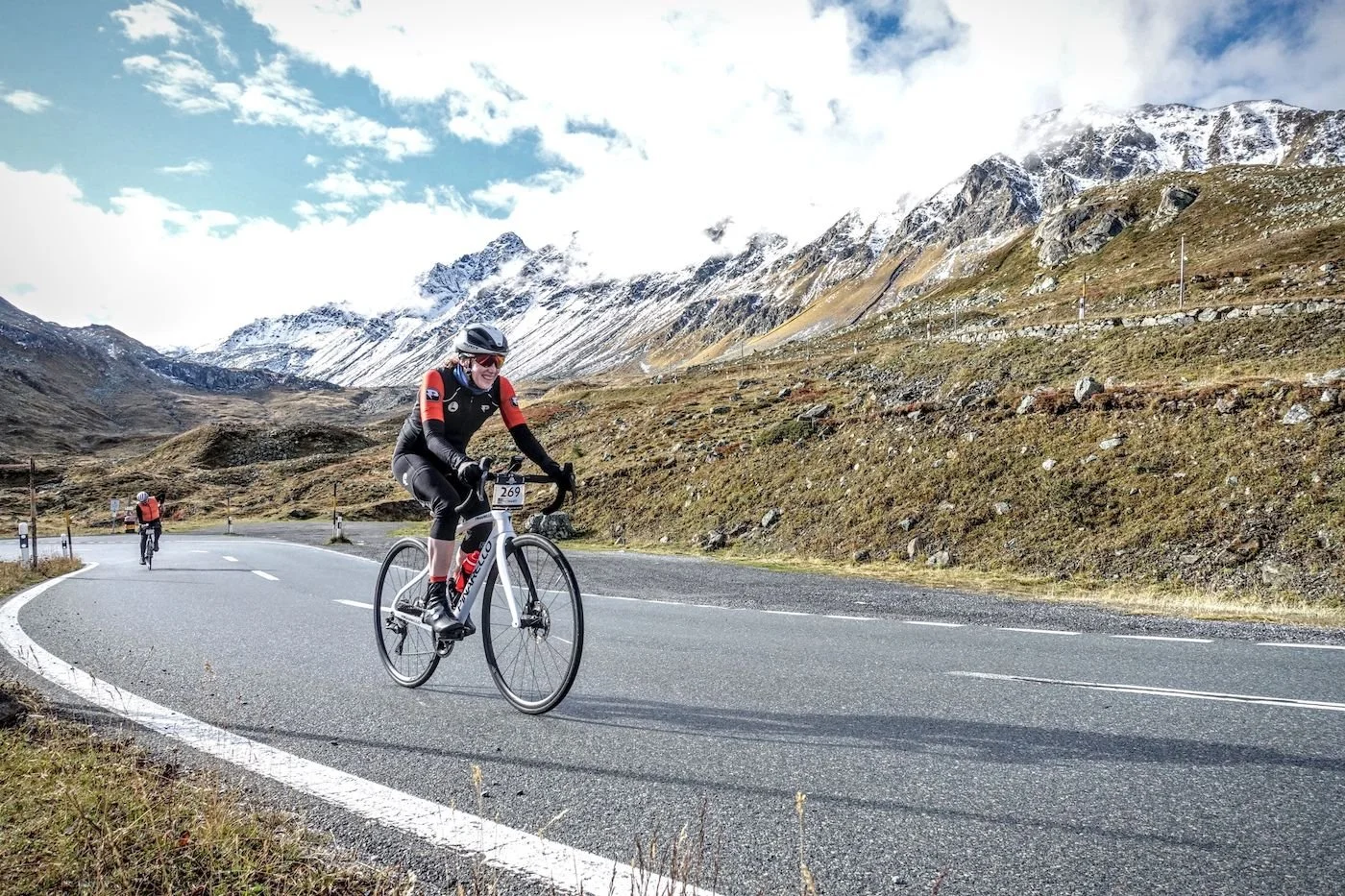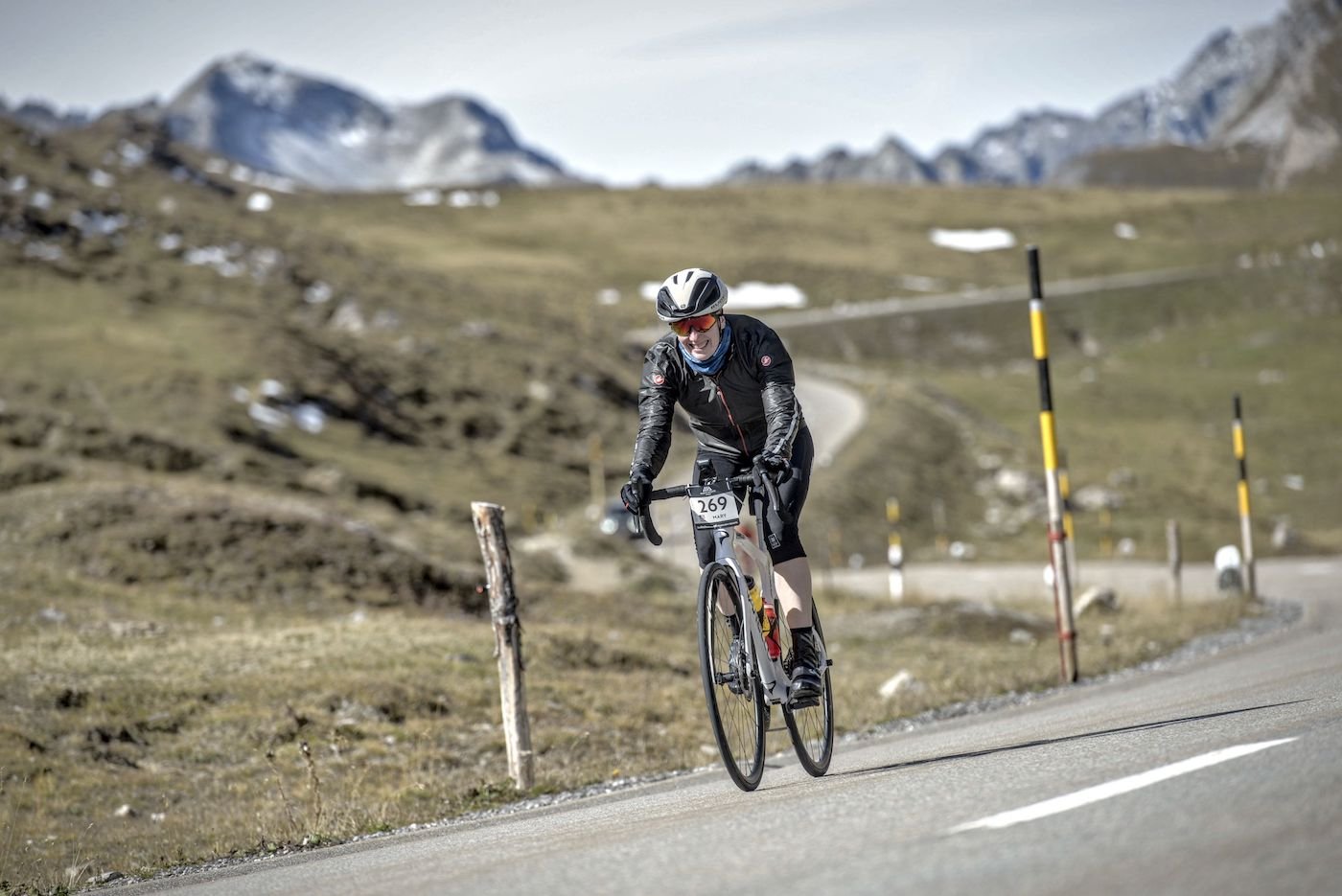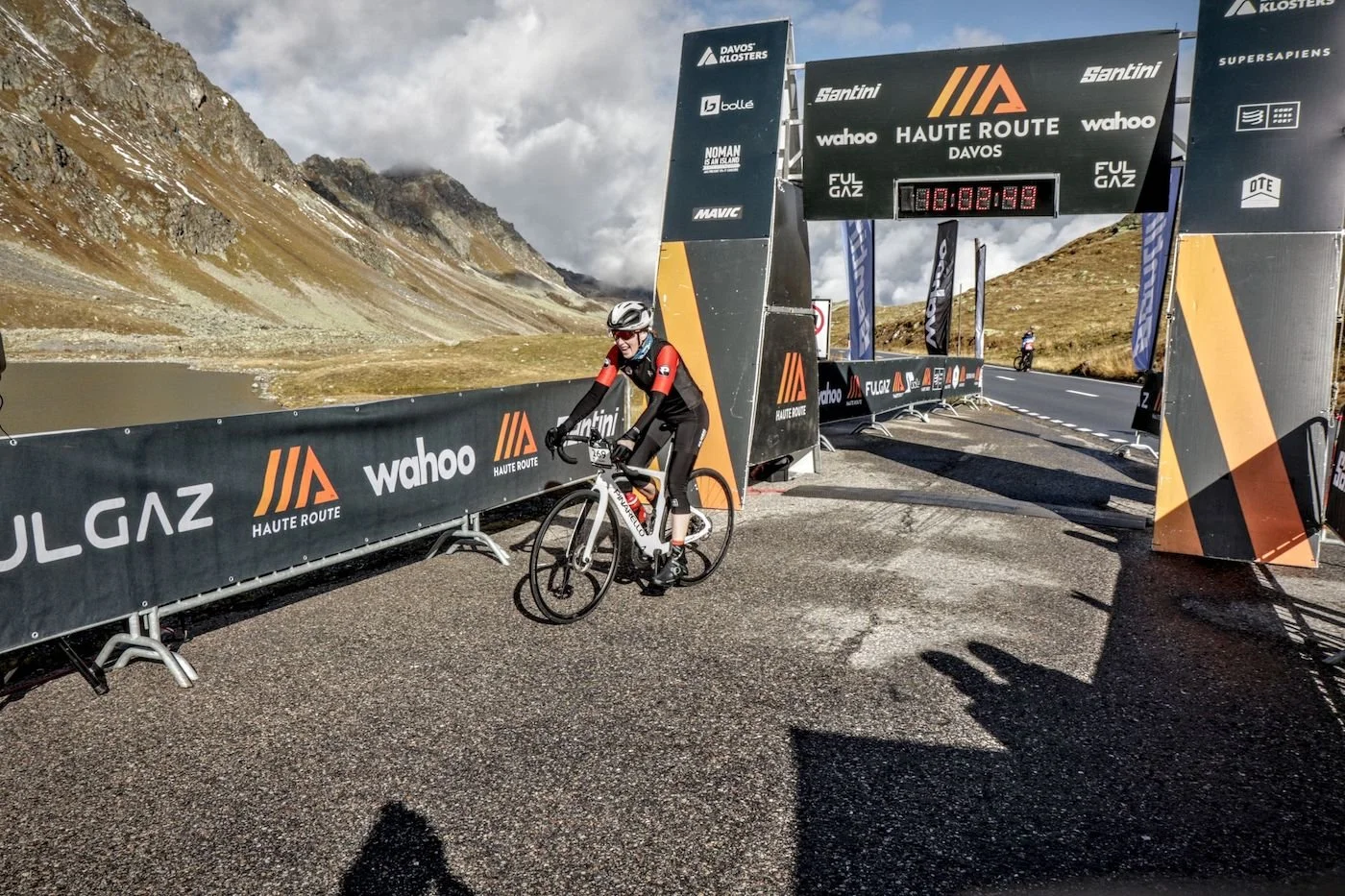Co-founder Molly Balfe’s Haute Route Davos Experience
Ed. Note—What do you want to do next year? It’s that time of year when athletes begin to think about the events they’d like to focus on, and we at Campfire Endurance Coaching heartily believe in finding new ways to put your hard earned endurance to use. Maybe you’re a dyed-in-the-Lycra triathlete, and maybe you’d like to try SwimRun, or some skate skiing, or something entirely different. Co-founder Molly Balfe got out of her comfort zone and participated in the Haute Route Davos last month, and she returns with this report. Be like Molly and realize that the exchange rate on endurance is quite high between sports.
I was feeling strong on the first big climb of Stage One at Haute Route Davos. The weather was cool and sunny and the peaks of the Swiss Alps were just barely streaked with snow. I had already been climbing for what felt like an eternity, but I could see a sign in the distance that I was pretty certain would let me know that there was just 1k left. As I drew closer, that sign made it clear that this event was going to be different from anything I had done before: 10k to the summit. I put my head down and nervously patted my jersey pockets, crossing my fingers that I’d packed enough gummy worms for the physical and emotional toll of what I had decided to take on.
Several months beforehand, I saw a post in the Ironman Certified Coaches Facebook Group looking for people who would be interested in completing a Haute Route event. Ironman had recently acquired the series, and they were looking for volunteers to gain experience that could be shared with interested athletes. After throwing my name in the hat, I was contacted by someone at Ironman asking me why they should pick me. I honestly responded that I am not particularly gifted at cycling, but I work really hard at improving. At that time, I was putting in a lot of work on the bike in the hopes of qualifying for Kona at Ironman Canada, so I know exactly how hard it can be to make those gains. I was thrilled when they told me to pick an event, and I chose the three-day ride in Davos.
My excitement turned pretty quickly to apprehension as the trip grew closer. I ended up having a great race in Canada, but I missed a KQ by three spots that were absolutely given up on the bike. I looked at the elevation profiles for the three Haute Route stages and started to wrap my head around the fact that I had never done anywhere close to this much climbing, and I’m just not that good at climbing in the first place. I started to worry about missing cutoffs and wondered if the lack of momentum on grades over 12% would cause me to just topple over on my bike. Would someone come get me if I couldn’t get to the top? Or would I have to lie in the road like an overturned cockroach and mourn all the squats I’d failed to do?
It turned out I didn’t need to worry about any of that. The event was spectacular, although I was right that it was very hard. Over three days, I climbed nearly 20,000 ft in just over 165 miles in the three stages. I learned some important lessons, which I’ll impart here now in case this is something on your bucket list.
Be prepared to ride in a pack. As triathletes, we often train alone or with a few friends, so the 50-60 minute neutral start at the beginning of Stages One and Two may come as a real surprise. I was lucky enough to ride with a cycling group in Brooklyn early in my athletic career, so I am comfortable being very close to other riders, at least until someone slams on their brakes without warning and nearly causes a pile up. Do yourself and your fellow athletes a favor and jump into a few group rides so you know some of the basics and can do your part to keep everyone safe.
Be realistic about your ability. The single most important decision I made for my race was to switch to a larger climbing gear on the bike I rented from France Bike Rentals (terrific bikes – rent a bike from them and leave yours at home). I originally intended to ride with a 28 as my biggest cog. That’s what my TT bike has, and it is totally sufficient for any of my local climbs. I mentioned this to my coach, who told me to switch to a 32 immediately. I have absolutely no doubt that this conversation was the difference between a successful event and a DNF. I ended up renting a bike with a 28 in Slovenia a few weeks beforehand and it was made abundantly clear that climbing in the Alps is unlike any climbing I have experienced thus far. The easier gear better suited my athletic profile. While I am undoubtedly a strength-limited athlete, I had raced an Ironman a month earlier and had buckets of aerobic fitness. Choosing a setup that complemented my training instead of my ego allowed me to spin up hills and pass people who were mashing their pedals while they Paper-boyed across the perfect Swiss asphalt.
Don’t neglect your fueling. You can get away with recovery beer and donuts in a one day event, but multi-day racing requires you to eat and drink consistently throughout your ride and to be diligent about your recovery after you finish. Aim for 60-90g of carbohydrates and at least a bottle of fluid (heavy sweaters are going to need a lot more) per hour. The aid stations at Haute Route events are terrific – you can expect to find potatoes, cured meat, cheese, soup, and pizza in addition to the usual sport foods (bars, gels, sports drink). You don’t have to run off the bike, so go ahead and try something new! Maybe not as much of the cheese as you’d like (I can tell you from experience), but you’ll learn what works for you.
Don’t skip the massage. My body was sore in ways that I’d never expected thanks to copious amounts of climbing, shivering, and clutching my brakes as I careened down the twisty descents that inevitably followed the summits. I put myself in the hands of the massage therapists after each stage, and in 15 minutes they had me tuned up enough to expect to be able to ride again tomorrow. I’m pretty sure my body only made it through the weekend because of the Swiss woman who dug her thumbs into my calves at the end of Stage Two.
Find friends. These events allow you to get pretty close to what riding in the mountain stages of major cycling races might be like. As a solo rider, the biggest difference I felt was the lack of a team to work with, both for the race advantage and for marveling at the fact that the road seriously just never stops going up. Eventually, I was lucky enough to find a few folks who were kind, hilarious, and excellent drafts. Nothing will make the endless climb go by faster, but you’ll enjoy schlepping up that hill a lot more if you have someone to joke with. If I get the chance to do a Haute Route event again, I will do everything I can to try to talk a bunch of friends into going with me.
I wasn’t sure what to expect from my weekend in Davos, but I ended up having a fantastic time. I challenged myself, got a lot braver, and rode my bike through some unbelievable scenery. If you are on the fence about signing up for one of these events, I highly recommend you do it. I have no doubt that I came back from Switzerland a stronger cyclist, but also one who is more dedicated to doing her squats.
Your author, PUMPED






